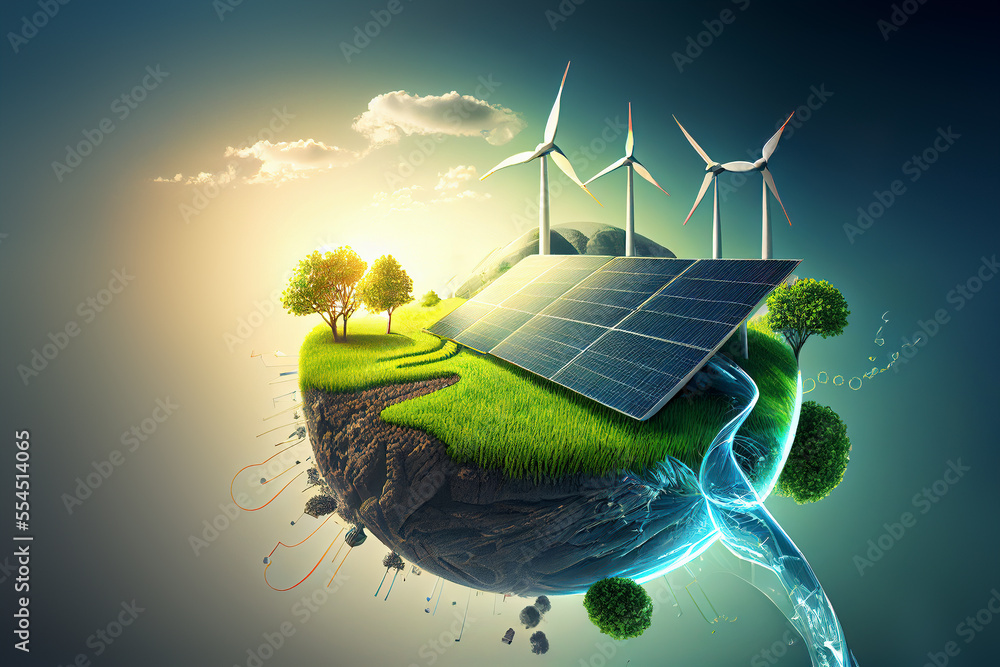In the contemporary discourse surrounding energy sources, the imperative to mitigate environmental degradation stands paramount. As the global community grapples with the repercussions of climate change, the quest for energy sources that are both sustainable and benign to the environment intensifies. This article endeavors to elucidate which energy source is considered the least harmful to the environment, exploring various options such as solar, wind, hydropower, geothermal, and nuclear energy.
To initiate this exploration, it is essential to establish a framework for assessment. The environmental impact of energy sources can be evaluated along a continuum that encompasses factors such as carbon emissions, land use, water consumption, biodiversity loss, and the potential for pollution. Each energy source possesses unique characteristics that influence its ecological footprint. Herein, we will delve into these dimensions, elucidating the merits and demerits of each energy source.
Solar energy has emerged as a preeminent contender in the realm of sustainable energy. Harnessed through photovoltaic cells, solar energy boasts a remarkable capacity to generate electricity without emitting greenhouse gases during operation. The lifecycle emissions associated with solar panels are significantly lower than those of fossil fuels. Nonetheless, the production of photovoltaic cells necessitates the extraction and processing of raw materials, which can lead to environmental perturbations, including habitat destruction and resource depletion.
Furthermore, the land footprint of large-scale solar farms can be considerable, often displacing local ecosystems. Nonetheless, solar energy is largely lauded for its versatility and decreasing costs. The advent of decentralized solar systems enables residential energy independence, thereby reducing the reliance on centralized, polluting power sources.
Transitioning to wind energy, it is evident that this renewable resource epitomizes a sustainable alternative. Wind turbines convert kinetic energy from atmospheric winds into electrical power without the emission of harmful pollutants. The operational emissions are negligible, presenting wind as a formidable competitor in the quest for low-impact energy. However, the installation of wind farms raises salient concerns regarding avian and bat mortality, as turbine blades can pose lethal risks to these populations. Additionally, the aesthetic and noise concerns associated with wind turbines have sparked opposition in certain communities.
Hydropower, another longstanding renewable energy source, warrants consideration due to its significant contribution to global electricity production. Dams and water reservoirs harness the gravitational potential energy of water, converting it into accessible energy. While hydropower generates minimal operational emissions, the environmental ramifications of dam construction can be profound. These projects can alter river ecosystems, disrupt fish migration patterns, and inundate vast tracts of land, resulting in both ecological and socioeconomic challenges.
It is pertinent to recognize the dual nature of hydropower as both a renewable energy source and a contributor to ecological disturbance. The concept of run-of-river hydropower presents a potential compromise, minimizing environmental disruption while still generating electricity. By implementing strategies that prioritize ecological conservation, the adverse effects of hydropower may be mitigated.
Geothermal energy, derived from the Earth’s internal heat, represents another viable contender in the low-emission energy arena. This energy source boasts a low carbon footprint during operation, as the release of greenhouse gases is minimal. The utilization of geothermal systems can also enhance energy security, providing consistent and reliable baseload power. However, geothermal power plants are geographically constrained, necessitating proximity to geothermal reservoirs. The extraction process may also induce ground instability and impact local water sources, necessitating careful site assessment and environmental management.
Finally, nuclear energy presents a controversial yet captivating option in the discussion of environmentally favorable energy sources. Nuclear power generates immense quantities of energy with minimal greenhouse gas emissions during operation. Its capacity for high-density energy production serves as a counterbalance to the intermittent nature of renewables like wind and solar. However, the narrative surrounding nuclear energy is far from unblemished. The management of radioactive waste presents an enduring challenge, and the potential for catastrophic events, albeit infrequent, looms large in public perception.
Nuclear plants also possess a significant land footprint, though often less than that of large-scale solar or wind farms. Moreover, the sourcing of uranium and the associated mining operations can inflict ecological harm. Importantly, advances in technology, such as Small Modular Reactors (SMRs), appear poised to offer safer, more efficient pathways for nuclear energy utilization, though widespread acceptance remains a formidable hurdle.
In summary, discerning the least harmful energy source to the environment requires nuanced consideration of diverse factors, including emissions, land use, and biodiversity impacts. Solar and wind energies emerge as leading candidates due to their minimal operational emissions and potential for sustainable integration into societal energy grids. Hydropower offers substantial energy generation potential tempered by ecological concerns, while geothermal energy maintains a respectable profile of low emissions, albeit with geographic constraints. Nuclear energy remains a contentious player, holding promise for significant energy output accompanied by challenges in waste and perception management.
The quest for the most environmentally friendly energy source is not merely an academic exercise but a profound inquiry into the future of energy production amid the ever-pressing realities of climate change. As society continues to innovate and evolve its energy infrastructures, understanding and prioritizing sustainability will be essential in guiding those advancements towards ecologically harmonious outcomes.












